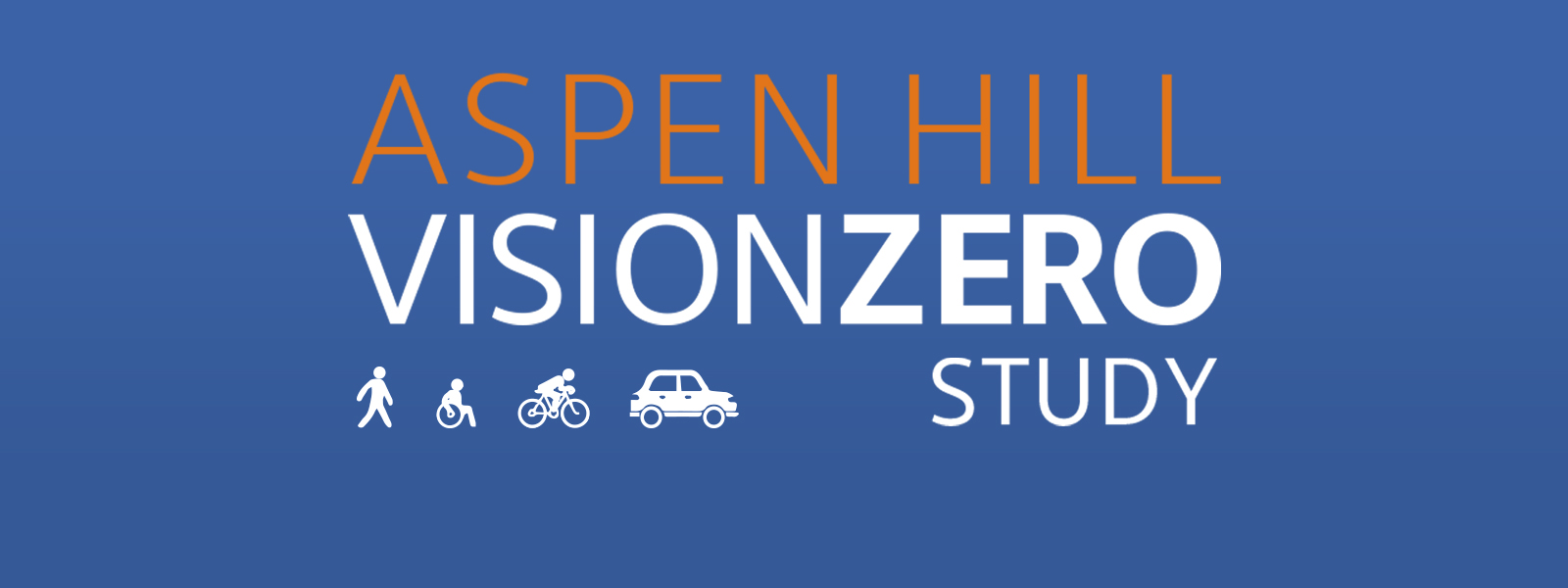
Discussion focused on potential safety measures for pedestrians, cyclists and motorists in Aspen Hill that will be refined this summer
SILVER SPRING, MD – The Montgomery County Planning Department briefed the Montgomery County Planning Board, both part of The Maryland-National Capital Park and Planning Commission, on the status of the Aspen Hill Vision Zero Study on Thursday, July 11, 2019. This briefing included an update on research conducted by staff, public engagement activities, coordination with agency partners and ongoing work with the community advisory group.
In addition, Montgomery Planning staff members presented some of the potential safety improvements for the area that are proposed in the study. They discussed study-wide upgrades and short-term and long-term solutions, including the following:
- Provide automatic pedestrian signals instead of push-button signals.
- Install and upgrade crosswalks on all approaches of a signalized intersection.
- Install speed cameras to enforce speed limits.
- Reduce target speeds on Connecticut Avenue and Aspen Hill Road.
- Relocate school bus stops from major roads to residential streets or shopping centers, civic buildings or religious institutions along arterials.
- Narrow interior travel lanes on major roads.
- Reconfigure some intersections and lanes to improve safety.
- Support the recommendations of Montgomery County’s 2018 Bicycle Master Plan.
For a complete list of improvements, go to the Aspen Hill Vision Zero Study website.
Launched in 2018, the Aspen Hill Vision Zero Study is focused on identifying existing barriers to safety and exploring ways to improve conditions in the area defined by commercial developments near Georgia Avenue, Connecticut Avenue and Aspen Hill Road; the area south of Bel Pre Road between Georgia and Connecticut Avenues; and the area south of Aspen Hill Road between Georgia Avenue and Parkland Drive, north of Matthew Henson State Park.
Over the coming months, staff will prepare a draft of the study that will be reviewed by the community advisory group and presented to the Planning Board in fall 2019. The study will result in recommended strategies to improve safety for all people who walk, bike, drive and take transit in Aspen Hill.
For more information, call lead planner Maren Hill at (301)-650-5613 or email Maren.Hill@montgomeryplanning.org.
Montgomery Planning’s Commitment to Vision Zero
Vision Zero is a proven strategy to prevent transportation-related deaths and severe injuries. This policy represents a fundamental change in thinking about roadway planning and design priorities. It changes the focus from vehicular mobility to safety for all people regardless of their mode of transportation.
Engineering, education and enforcement are part of Vision Zero strategies to help anticipate human error to save lives and reduce the frequency and severity of crashes.
Through its 2016 resolution, Montgomery County committed to creating a Vision Zero environment to eliminate traffic fatalities and severe injuries.
Montgomery Planning is also committed to Vision Zero — to putting safety first for all people in all communities, whether they’re on foot, on bicycles, in cars or using transit. As the agency charged with creating a vision for the county, Montgomery Planning has a unique role to play in engaging the community to re-envision our auto-oriented roadways as safe, complete streets.
Montgomery Planning has been incorporating safety into master plans for some time. Vision Zero offers an opportunity to step up these efforts. As safety increasingly becomes a central focus of planning efforts, we can look for ways to save lives by reducing speeds, decreasing the chance for collisions and recommending land use changes, especially on suburban and arterial roadways.
When well implemented, plans can support Vision Zero by changing our built environment from one that is dominated by cars and focused on traveling quickly over long distances to one that is equitable for all users, regardless of transportation mode, and one that prioritizes life and safety.
Whether applied to an urban, suburban or rural area, Vision Zero policy fundamentals are the same: saving lives means reducing speeds and decreasing the chance for collisions.